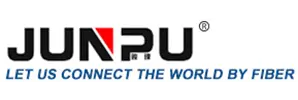
-
Home
-
Products
- Solution
- WHY JUNPU
- Services
- Resources
- News
- Contact Us

In the world of fiber optic networks, splice enclosures play a crucial role in ensuring the seamless connection and protection of fiber optic cables. These enclosures come in various types, each with its own unique features and benefits. In this blog, we will delve into the different splice enclosure types commonly used in fiber optic networks and explore their advantages and applications.
Dome splice enclosures are one of the most popular types used in fiber optic networks. These enclosures are typically made of durable plastic or metal materials and feature a dome-shaped design that provides ample space for splicing and organizing fiber optic cables. Dome splice enclosures are often used in outdoor installations due to their weatherproof and UV-resistant properties. They are also known for their ease of installation and maintenance, making them a preferred choice for many network operators.
Inline splice enclosures are another commonly used type in fiber optic networks. These enclosures are designed to protect and secure splices in a straight-line configuration, allowing for easy access to fiber optic cables for maintenance and repair. Inline splice enclosures are ideal for installations where space is limited, as they can be easily mounted on poles, walls, or in confined spaces. They are also known for their flexibility and scalability, making them suitable for a wide range of network applications.
Fiber distribution hubs are larger and more robust splice enclosure types used in fiber optic networks. These enclosures are designed to accommodate a larger number of fiber optic cables and splices, making them ideal for centralizing and distributing fiber connections in large-scale network deployments. Fiber distribution hubs are often used in data centers, office buildings, and telecommunications facilities where high fiber density and connectivity are required. They offer advanced features such as cable management systems, fiber trays, and security locks to ensure optimal performance and protection of fiber optic cables.
Wall mount splice enclosures are compact and space-saving solutions for smaller fiber optic network installations. These enclosures are designed to be mounted on walls or other vertical surfaces, providing a secure and organized space for splicing fiber optic cables. Wall mount splice enclosures are commonly used in residential, commercial, and industrial settings where a limited number of fiber optic connections are needed. They offer easy access to fiber cables and splices, making them convenient for maintenance and troubleshooting activities.
In conclusion, splice enclosure types play a critical role in the performance and reliability of fiber optic networks. By understanding the different types available and their respective features, network operators can choose the best enclosure solution for their specific needs and applications. Whether it's a dome splice enclosure for outdoor installations or a fiber distribution hub for large-scale deployments, selecting the right splice enclosure type is essential for ensuring the proper protection and management of fiber optic cables. Next time you are planning a fiber optic network installation, consider the various splice enclosure types available and choose the one that best suits your requirements.
 Call us on:
Call us on:  Email Us:
Email Us:  Wanhua Science and Technology Park, No. 528, Shunfeng Road, Donghu Street, Linping District, Hangzhou City, Zhejiang Province
Wanhua Science and Technology Park, No. 528, Shunfeng Road, Donghu Street, Linping District, Hangzhou City, Zhejiang Province